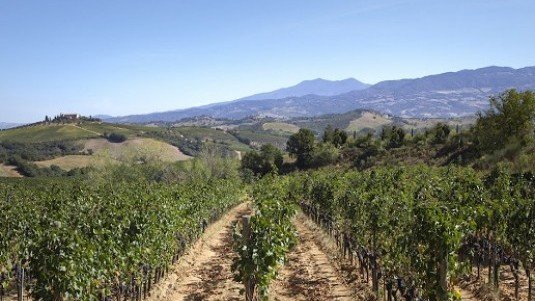With +35% bottled, the certified quality of Montecucco wines meets the consumption trend established in recent years. The Consortium of Protection confirms the DO’s commitment to sustainability and action to raise awareness of the climate emergency.
The year 2023 begins in the best possible way for the Montecucco DO, which, putting on file a 2022 with much more than encouraging data, ranks to all intents and purposes as Tuscany’s best-performing appellation in the year that has just come to an end. This is confirmed by the statistical report on the main Tuscan wine appellations by A.Vi.To. – shared with all regional DOs earlier this month – which shows a record bottled wine performance for the small Amiata appellation of +35 percent over 2021, even surpassing the results of the already successful 2019.
The year that has just ended was one that had to deal with a general framework of great uncertainty and difficulty for the wine sector – and not only – but at the same time confirmed a direction that had already been well outlined at the end of 2020 with respect to the ‘new’ consumption trends at the international level. A trend that observes an increase in sales of the sought-after, mid-range and medium-high-end product, to the detriment of so-called common wines. Not only that: pillar of the purchase choice remains sustainability. Consumers, year after year, are increasingly attentive to issues related to environmental protection, both from the point of view of cultivation and production, and will continue to consciously and ethically choose products of certified quality.
“If ‘niche’ and ‘sustainability’ are confirmed as leitmotifs of the wine market, Montecucco consistently makes its way into this now established dimension of international demand. Proof of this is the extraordinary growth in bottled wines observed at the close of 2022, which places us at the top of the podium of Tuscan appellations,” declares Giovan Battista Basile at the head of the Consortium for the Protection of Montecucco Wines. “The market today, more than ever, is looking for products that are bio-certified, quality and reliable, values that have always been closely linked to our DO, guaranteed by our Protection Consortium and constantly promoted internationally. Let’s not forget that the Montecucco DO-with 68 member farms and 500 hectares claimed (out of about 800 potential) distributed in the seven municipalities of Arcidosso, Campagnatico, Castel del Piano, Cinigiano, Civitella Paganico, Roccalbegna and Seggiano, Grosseto province-boasts 85 percent organic production. But beyond sustainability, ours is an extremely distinguishable Sangiovese-authentic flagship of its place of origin, a true niche to return to the initial discourse-produced by small or medium-sized family-run farms that over the years have been able to interpret the peculiar identity of the territory. In short, a unique jewel of its kind.”
Giovan Battista concludes “I remember that exactly a year ago Montecucco was reported among the international DOs not to be missed in 2022, within a small ranking of international wines compiled by the famous U.S. magazine Forbes. It was a decidedly positive start to the year for our appellation, which did not disappoint our expectations.”
The good news on the trends front, however, does not allay the Montecucco Consortium’s concern about issues related to the climate emergency and the memory of the devastating fires that hit the Cinigiano area in the summer of 2022. Faced with calamities of this magnitude, it becomes more necessary than ever to reopen a debate that has been affecting the agricultural sector not only in Tuscany in recent years. “We reiterate our position about the urgency of simplifying the procedures for the construction of reservoirs to counter the water emergency caused by climate change that is afflicting our sector,” explains Giovan Battista supported by the Board of Directors of the Montecucco Protection Consortium. “In general, the international community should give absolute priority and concretely implement all the necessary steps to contain the rise in global temperature and counter its negative effects-which in recent years are becoming more frequent and serious-to the detriment of the environment and production.”



